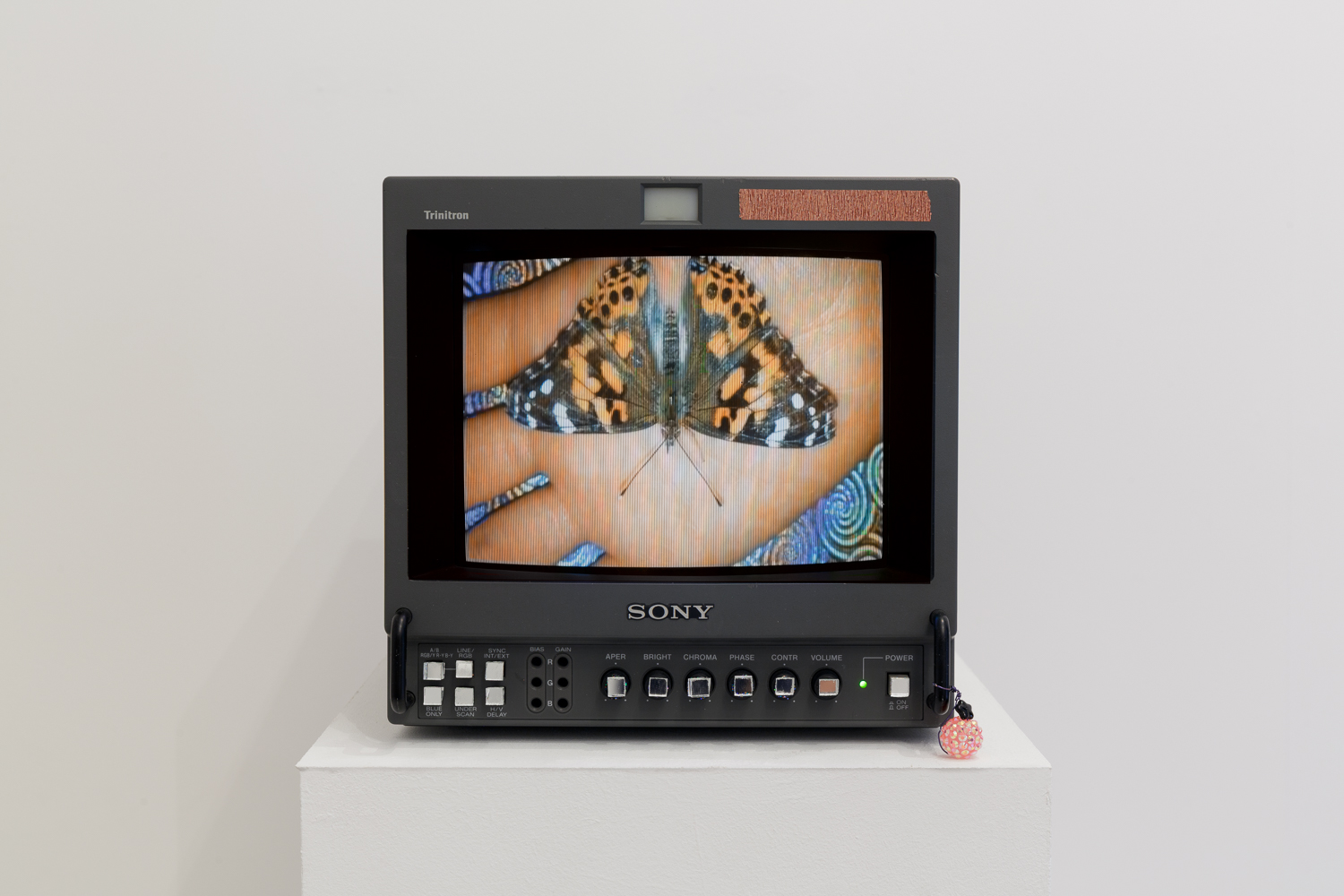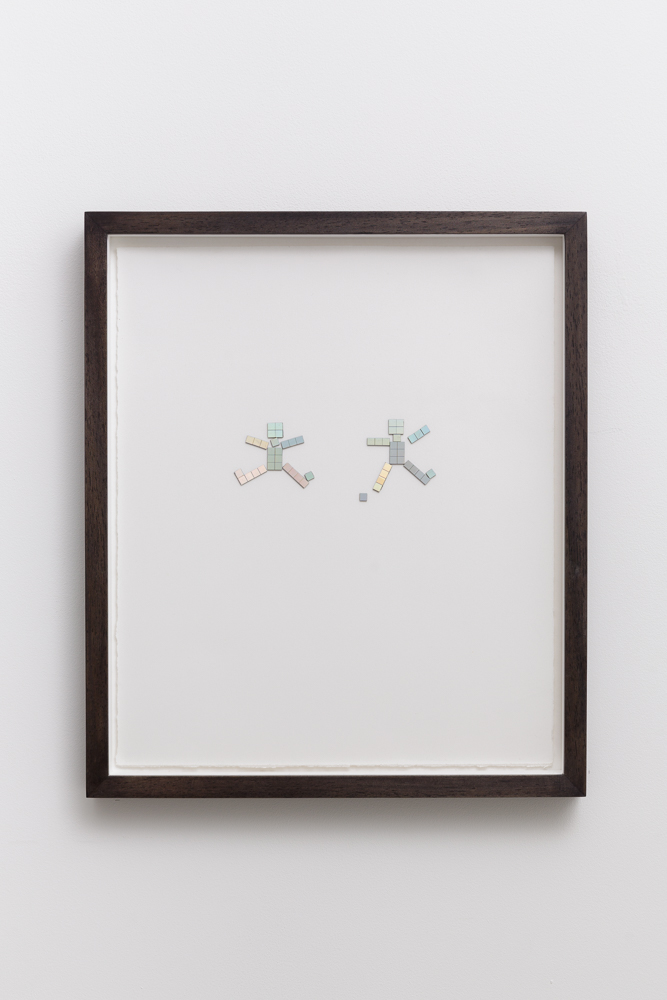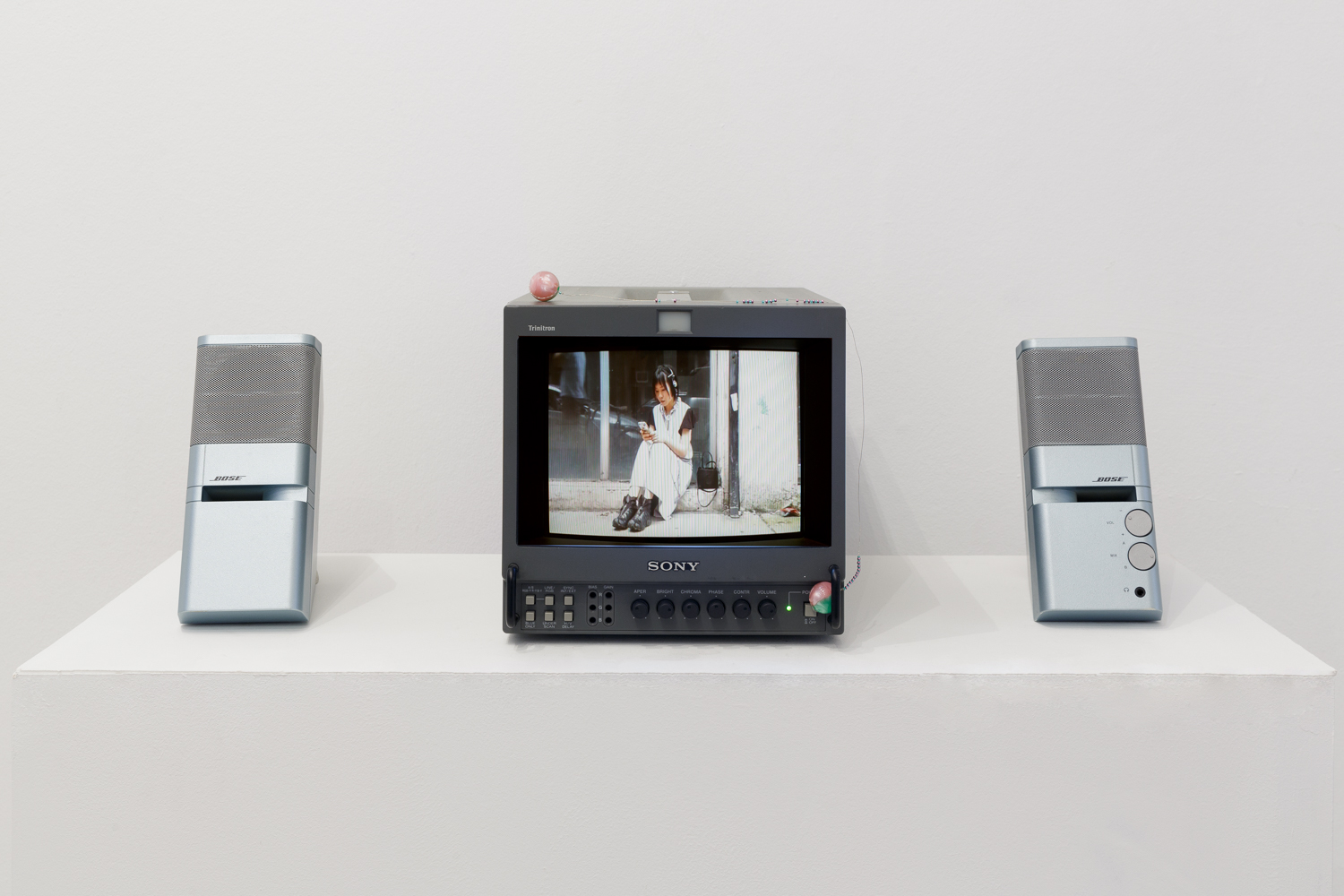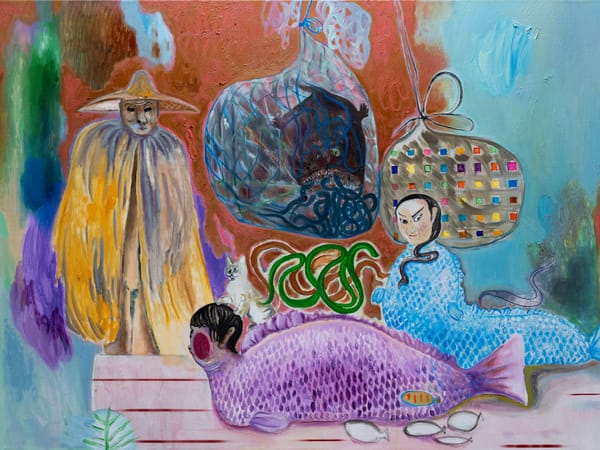Shows
Maggie Lee’s “Music Videos”


In “Music Videos,” Maggie Lee returns to her lo-fi style of filmmaking—initially realized in her acclaimed feature-length documentary, Mommy (2015), exploring the death of her mother—to linger on the experience of a night out. While earlier works are more overtly biographical, interspersed with clips from home videos or extracts from her diary, for the new video installations at London’s Arcadia Missa, Lee brings her collagist editing technique to bear on the pedestrian template of the music video.
At opposite ends of the gallery space, two small TV sets sit atop tall white podiums, facing one another, playing the music videos concurrently. The TVs used for Miho Hatori MV and Galcher Lustwerk MV (all works 2018) are embellished with colorful beads and mirrored tiles, lending a child-like charm in keeping with Lee’s penchant for amateur production.

In Miho Hatori MV, set to the song “19 Years Old” by Hatori’s musical act New Optimism, Lee films a mini glass butterfly house in her bedroom (Lee makes work from her home in Brooklyn). Butterflies linger on her finger, flutter across bedding printed with “LOVE” in orange bubble-font, bustle and flitter across her glasshouse inlaid with a multicolored checkerboard. Next to Lee’s bed, a small Sony TV—similar to the Miho Hatori MV display—plays a grainy turquoise-tinted video in which Hatori (presumably) performs in sync with the music. Curiously, the monitor in Lee’s bedroom also plays clips of her butterflies, creating the multilayered dimensionality of a mise en abyme. The song itself, with its glittering synths and electronically enhanced vocals, produces a trance-like effect of progressive interiority that chimes with the video’s intimate bedroom setting. The visuals of Miho Hatori MV increasingly move toward tacky psychedelia, as
when Lee moves a piece of spiral-patterned holographic paper behind one butterfly. The patterns of wings and their undersides, the checkerboard, the wooden floor, and creased bedspread saturate, bleed and intersperse in the mind. As butterflies conjoin on a Bose speaker or mate on a desiccated white lily to the electronic soundtrack, one is reminded of oblivious, blissed-out couplings in dark corners of clubs.

Installed throughout the gallery are items seen in Miho Hatori MV, bringing the (semi-)fictional personal and social encounters depicted in the video into the real space of the viewer, which creates the kind of bridge between a collective and personal experience so often endorsed by nightlife. Framed on paper are two jumping figures (Birth of Twins), one slightly more malformed than the other, composed of square mirrored tiles. Another wall displays Bossa Nova Civic Cup, a lilac cup from a venue, clipped by a jade hair accessory that appears on the aforementioned holographic paper. It is as if these recurring objects are there to help us piece together the puzzle of the night before, the fake familiarity of such banal minutiae used to coax our false memories of having experienced Lee’s party.
Where Miho Hatori MV appears introspective, Galcher Lustwerk MV toys more decidedly with the performative. In the latter, two women play Lustwerk’s “Template” in separate locations: we watch them walk down the street—self-consciously brandishing faux-vintage headphones—and pass one another. Attentive to the relative value of memory, and how dominating narratives condition the significance of particular moments, Lee takes the instant of passing as a sardonic event: they walk in slow-motion, lock eyes, notice one another. Clearly, the generic nature of the style and content of the film limits the capacity for Lee’s distinctive sincerity. Instead, the video is a playful satire of cliché music-video qualities: a seductive tone, product placement, and prosaic narrative.

Music can hold its own time, rhythms their emotions, refrains their memories. The two video installations at “Music Videos” recaptured the vague social experience of nightlife, but it was the inclusion of particular objects in the presentation that gave Lee’s propensity for collage actual dimension, turning it into a methodology for leveraging affect, from the drunken haze of a night out to the excitement and intrigue of a chance encounter. A stamp, On the List (2018), is issued for entry to the exhibition, but by the time I leave the atmosphere created by “Music Videos,” I think, really, I’ve missed the party.
Maggie Lee’s “Music Videos” is on view at Arcadia Missa, London, until October 27, 2018.







